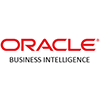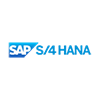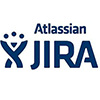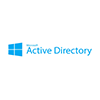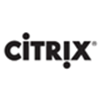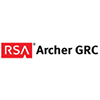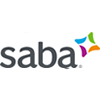
In the financial services industry, safeguarding sensitive data is paramount. Banks protect vast amounts of account information, social security numbers, and financial transactions. Ensuring this data remains secure from unauthorized access is critical, and User Access Reviews (UARs) are a crucial line of defense.
However, effective UARs require more than just a checkbox approach. Weak UAR processes leave banks vulnerable to costly data breaches and regulatory fines. Let’s delve into the best practices to ensure your UARs are robust and effective:
The Power of Least Privilege
Consider this scenario: a customer service representative with access to modify loan terms. This situation exemplifies “privilege creep” – granting users more access than their job duties require. The principle of least privilege dictates that users should only have the minimum access needed to perform their tasks.
Enforcing the least privilege during UARs significantly reduces potential damage from insider threats, whether accidental or malicious. According to a Javelin Strategy & Research report, Account Takeover (ATO) fraud, often facilitated by insider access, cost U.S. financial institutions a staggering USD 18.9 billion in 2022.
Automation: Streamlining Security, Not Sacrificing It
Manual UARs are inefficient and error-prone. Large financial institutions with complex access control systems struggle to keep pace with manual reviews. Automation offers a powerful solution, streamlining the UAR process and minimizing human error.
Automated UAR solutions can:
- Schedule and conduct reviews regularly.
- Automate access request workflows.
- Identify and flag suspicious access patterns.
- Generate comprehensive audit trails for compliance purposes.
By automating UARs, banks can free up IT security resources to focus on more strategic security initiatives and incident response.
The BAAR Advantage: Building a Security Citadel
Effective UARs are a cornerstone of robust cybersecurity in banking. Implementing these best practices – least privilege, automation, and continuous improvement – can significantly reduce the risk of data breaches, insider threats, and hefty fines.
Ready to transform your UAR process and build an impenetrable security posture? BAAR’s UAR solutions are designed specifically for the financial services industry. We offer:
- Automated workflows to streamline UARs and free up IT resources.
- Least privilege enforcement to ensure users have only the access they need.
- Integration with Multi-Factor Authentication (MFA) for added security.
- Comprehensive reporting to generate detailed audit trails for compliance.
Best Practices for Effective User Access Reviews
Ensuring that user access reviews are effective involves implementing best practices that promote thoroughness, accuracy, and consistency. Here are some key best practices to follow:
Define Clear Policies and Procedures
- Establish and document clear access control policies outlining who needs access to what resources and why.
- Define procedures for conducting user access reviews, including frequency, scope, and reviewer responsibilities.
Use Role-Based Access Control (RBAC)
- Implement RBAC to assign access permissions based on job roles rather than individual users.
- Regularly review and update role definitions to reflect job responsibilities and organizational structure changes.
Automate the Review Process
- Utilize Identity and Access Management (IAM) tools to automate data collection, review workflows, and reporting.
- Automation ensures consistency, reduces manual errors, and saves time.
Regular and Scheduled Reviews
- Conduct access reviews on a regular schedule, such as quarterly or annually, to ensure timely updates to user access.
- Perform ad-hoc reviews during significant changes like mergers, acquisitions, or reorganizations.
Involve the Right Stakeholders
- Ensure access reviews are conducted by individuals who understand users’ job roles and responsibilities.
- Involve managers, system owners, and security personnel in the review process.
Provide Adequate Training
- Train reviewers on the importance of access reviews, the review process, and how to identify inappropriate access.
- Educate employees about requesting access changes promptly when their job roles change.
Maintain Accurate and Up-to-Date Records
- Keep detailed records of user access permissions, role definitions, and review outcomes.
- Ensure records are updated in real time to reflect any changes in user access.
Implement a Least Privilege Principle
- Grant users the minimum level of access necessary to perform their job functions.
- Regularly review and adjust permissions to ensure compliance with the least privilege principle.
Monitor and Audit Access Continuously
- Implement continuous user access and activity monitoring to detect anomalies and potential security risks.
- Conduct periodic audits to verify the access review process’s effectiveness and identify areas for improvement.
Enforce Accountability and Follow-Up
- Hold reviewers accountable for the accuracy and completeness of their reviews.
- Establish a process for following up on identified issues, such as unnecessary access, and ensure timely remediation.
Leverage Reporting and Analytics
- Use reporting and analytics tools to gain insights into access patterns and review trends and potential risks.
- Generate reports providing a clear overview of access review outcomes and highlighting areas needing attention.
Engage in Continuous Improvement
- Regularly assess and refine the access review process to address challenges and incorporate best practices.
- Solicit feedback from reviewers and stakeholders to improve the process’s effectiveness.
By following these best practices, organizations can ensure that their user access reviews are thorough, accurate, and effective in maintaining security and compliance.
Contact BAAR Today
Ready to fortify your financial fortress? Contact BAAR today for a free consultation and discover how our UAR solutions can empower your bank to achieve best-in-class security. Don’t wait for a security breach to expose your vulnerabilities. Invest in effective UARs and safeguard your financial data.

